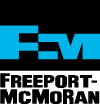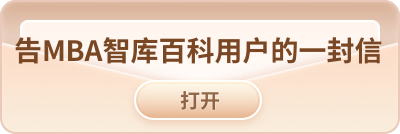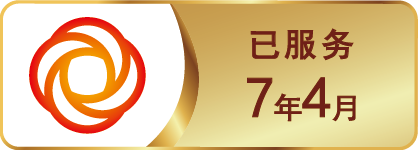美國自由港邁克墨倫銅金礦公司
出自 MBA智库百科(https://wiki.mbalib.com/)
美國自由港邁克墨倫銅金礦公司(Freeport-McMoRan Copper & Gold Inc.)目錄[隱藏] |
Freeport-McMoRan Copper & Gold Inc.(代號FCX)2007年03月16日以價值259億美元現金及股票收購對手Phelps Dodge Corp.的計劃已獲得2公司股東同意,將造就世界上最大的上市銅生產商。Phelps Dodge的每1股收取88美元現金,總額以180億美元為限,同時可交換0.67的Freeport普通股,以2007年03月12日收市價計,總共為125.53美元。收購結束後,Freeport大約有3.34億上市股票,該公司在2006年12月宣佈收購計劃時表示,Phelps Dodge 股東將擁有合併公司的38%股份。
新公司名為Freeport-McMoRan Copper & Gold,由Freeport的總裁兼行政總監艾克森 (Richard Adkerson)主持大局,總部設於鳳凰城。不過一些作業會沿用Phelps Dodge名義,也要繼續用新奧爾良辦公室從事印尼 Grasberg礦的行政及會計作業,該礦是世界最大的貴金屬礦。
Freeport發言人普洛布(Greg Probst)表示,相信不會裁員或關閉工廠,因為兩公司的業務並未重覆。Freeport雇用的15,000人大部分在印尼工作,Phelps Dodge在全球作業,有20,000名左右員工,它正在秘魯Cerro Verde礦進行耗資8.5 億美元的擴充計劃,另耗資5.5億美元在亞利桑那州沙福特(Safford)附近開發銅礦,並預備用6.5億美元開發剛果民主共和國的 Tenke Fungurme銅礦。
Freeport在2006年收入57.9億美元而盈利14億美元,該股在紐約證券交易所上漲36美仙,報56.38美元。Phelps Dodge去年收入119.1億美元而盈利30.2億美元,其股價上漲46美仙,報125.71美元。
Freeport-McMoRan Copper & Gold Inc., (FMCG,nyse:FCX)通常簡稱自由港,是世界上成本最低的銅生產商,也是世界上最大的黃金生產商之一。該公司原總部位於路易斯安那州新奧爾良,但在2007年收購銅生產商菲爾普斯·道奇後,最近將總部遷至亞利桑那州鳳凰城。除菲爾普斯道奇外,其子公司還包括印尼自由港PT、伊爾加東部礦業公司PT Irja Eastern Minerals和大西洋銅礦公司S.A.自由港是世界上最大的公開交易銅和鉬生產商。
Best known for its Grasberg mine in Papua (Indonesian province), Indonesia, the company is the largest taxpayer to the Indonesian government; it mines and mills ore containing copper, gold, molybdenum and silver for the world market. Richard C. Adkerson is President and Chief Executive Officer of Freeport-McMoRan Copper & Gold and James R. Moffett is the company's Chairman.
McMoRan Exploration Company is a separately traded firm with some shared management with Freeport-McMoRan Copper & Gold Inc. . Richard C. Adkerson and James R. Moffett are co-chairmen of McMoRan Exploration. McMoRan Exploration, an oil and gas exploration and production firm based in New Orleans, Louisiana, was created in 1998 by the merger of McMoRan Oil & Gas and Freeport-McMoRan Sulphur. McMoRan Exploration recently acquired the famed Blackbeard offshore prospect in the Gulf of Mexico, that Exxon Mobil Corp. abandoned in 2006 after drilling a 30,000 foot dry hole. McMoRan Exploration's well is currently (7/21/08) below 32,550 feet, the deepest penetration of the earth ever recorded.
The company was founded as the Freeport Sulphur Company in 1912, and the company founded Freeport, Texas that same year, near its new sulphur mines, then the largest in the world . Freeport pioneered mining sulphur by the Frasch Process at mines along the US Gulf Coast. Freeport Sulphur began to diversify in 1931, purchasing maganese deposits in Oriente, Cuba. The company produced nickel during WW2, and potash in the 1950s. In 1955, Freeport invested $119 million in constructing a nickel -cobalt mine at Moa Bay, Cuba and a refinery at Port Nickel, Louisiana. In 1960 the Fidel Castro government nationalized the Cuban facility.
In 1956, the company formed Freeport Oil Company, and sold a Louisiana oil discovery for $100 million in 1958. In 1961, the company entered the kaolin business, and in 1964 formed Freeport of Australia to pursue mining opportunities there and in the surrounding Pacific Ocean region. In 1960, a team of Freeport geologists confirmed the Dutch discovery of the rich Grasberg_mine copper and gold discovery, located in extremely rugged, remote country in the Jayawijaya Mountains, in then-Netherlands New Guinea. In 1966, Freeport founded Freeport Indonesia, Inc. and negotiated a contract with the Indonesian government, which had taken over the former Dutch colony in 1963, to develop the Ertsberg deposit. In their feasibilty study, Freeport geologists estimated that the orebody totaled 33 million tons averaging 2.5% copper. The Ertsberg was the largest above-ground copper deposit ever discovered.
Construction of an open pit mine began in May 1970, and in mid-1973 the new Ertsberg mine was declared fully operational. Officials at Bechtel, the primary contractor on the project,called mine development at Ertsberg "the most difficult engineering project they had ever undertaken." The many challenges included building a 101 kilometer long access road (a project that required boring kilometer long tunnels through two mountains) and constructing the world's longest single span aerial tramway. Aerial tramways were needed to move people, supplies, and ore because a 2,000 foot cliff separates the Ertsberg mine (at 12,000 feet elevation) from the mill (at 10,000 feet). Getting copper concentrate from that mill to the shipping port required installation of a 109-kilometer long slurry pipeline - then the world's longest.
Mine construction and startup cost about US$200 million. The development of the Ertsberg District was an engineering marvel, but the mine's early financial performance was disappointing. Depressed copper prices and high operating costs kept the operation marginal during the 1970s.
In 1971 the company changed its name to Freeport Minerals Company (FMC) to reflect its role as a diversified mineral producer. FMC formed Freeport Gold Company in 1981 to operate a rich new gold discovery at Jerrit Canyon, Nevada.
McMoRan Oil & Gas was formed in 1967 by three partners, including James R. (Jim Bob) Moffett, the present CEO of FMCG. During the 1970s, the company acquired a reputation as an aggressive petroleum explorer with cost-efficient drilling programs. It formed drilling partnerships with several companies, including Freeport. In 1981 Freeport Minerals merged with McMoRan Oil & Gas to form Freeport-McMoRan Inc.
In 1982 Freeport Gold Company was the world's largest gold producer, producing 196,000 ounces of gold in its first full year of operation.
By 1989 Freeport-McMoRan had two world-class mines to develop: the new discovery at Grasberg, Indonesia, with the world's largest gold ore reserve, and one of the world's largest copper reserves; and the Main Pass sulfur-oil-gas deposit offshore from Louisiana, with estimated reserves totalling 67 million tonnes of sulfur, 39 million barrels of oil, and seven billion cubic feet of natural gas. These were rich deposits, but would be very expensive to develop. Freeport sold about $1.5 billion in assets to finance the development of these two projects.
By 1991, Freeport-McMoRan Inc. was basically a holding company for its two principal assets, Freeport-McMoRan Copper & Gold (FMCG) and Freeport-McMoRan Resource Partners, which ran the sulphur and fertilizer business. Freeport's focus was was to raise enough cash to finance the development of the huge finds at Grasberg and Main Pass. Both of these assets got better the more they were studied: Main Pass was the second largest recoverable sulphur reserve then known, and Grasberg's ore reserves -- and profit potential -- were truly enormous.
In 1994 Freeport-McMoRan Spin out its entire interest in Freeport-McMoRan Copper & Gold, which became an independent company, fully focussed on the Indonesian operation. In 1997 Freeport-McMoRan Inc., the former parent company, was itself acquired by The Mosaic Company, a large fertilizer producer.
In 1997 the company exposed the Bre-X Gold Scandal. Brought in by the Indonesian government, Freeport was not able to correlate Bre-X's fraudulent claims to finding the largest gold mine ever discovered; Bre-X subsequently went bankrupt.
The Grasberg mine, FMCG'S crown jewel, soon became a source of violent trouble and terrible publicity , which continues today. It is also the world's most profitable mine.
North American operations:
- Morenci, Arizona, 85% owned by FMCG (copper)
- Bagdad, Arizona, 100% owned (copper, molybdenum)
- Sahuarita, Arizona, 100% owned (copper, molybdenum)
- Miami, Arizona, 100% owned (copper)
- Safford, Arizona, 100% owned (copper)
- El Chino mine, New Mexico, 100% owned (copper, molybdenum)
- Tyrone, New Mexico, 100% owned (copper)
- Henderson Mine, Empire, Colorado 100% owned (molybdenum)
- Climax, Colorado (molybdenum)
South American operations:
- Candelaria/Ojos del Salado, Chile, 80% owned by FMCG (copper)
- El Abra, Chile, 51% owned (copper)
- Cerro Verde, Peru, 53.6% owned (copper, molybdenum)
European operations:
- Atlantic Copper , copper refinery in Huelva, Spain
African project:
- Tenke Fungurume, Democratic Republic of Congo (copper, cobalt)
Asian operations:
- Grasberg mine, Papua (Indonesian province), Indonesia, 76.6% owned by FMCG (through subsidiaries) (copper, gold, silver)
In 2003 Freeport admitted it had been paying the local Indonesian military and police to keep the native landowners away from the lands it develops under the current Indonesian government contract; Freeport argues that this is necessary to provide security to its employees, both local and foreign.
In 2005, the New York Times reported that company records showed the total amount paid between 1998 and 2004 amounted to nearly US$20 million, distributed among both officers and units, with one individual receiving up to US$150,000. The company response was that there was "no alternative to our reliance on the Indonesian military and police in this regard", and that the support provided was not for individuals, but rather for infrastructure, food, housing, fuel, travel, vehicle repairs and allowances to cover incidental and administrative costs.
In contending that the money went to the government and not to individual officers, "the statements amount to a knowingly misleading representation by Freeport," the comptroller of the New York City Pension Funds said. While in Indonesia, Juwono Sudarsono, the civilian defense minister, said that it is illegal under Indonesian law for foreign companies to pay soldiers.
The New York City comptroller has charged that Freeport-McMoRan knowingly made "false or misleading" statements about payments to the Indonesian military and might have filed false proxy statements in violation of the Securities Exchange Act. He has also stated that he believed the company might have violated the Foreign Corrupt Practices Act, which forbids U.S. companies to bribe foreign officials. The Securities and Exchange Commission and the Justice Department are currently investigating these claims.
Freeport-McMoRan's close ties with the authoritarian Indonesian militia along with the military's heavy-handed tactics in dealing with natives has attracted the attention of many human rights advocates and organizations. However, by the late 1990s, after over twenty five years operating in Papua without recognising the land rights of the traditional peoples it finally announced recognition and established agreements with various Papuan tribes.
Denise Leith has written a comprehensive history of Freeport's influence, impact, and role in Indonesia [1]. The book has received generally favorable reviews as a fair and balanced treatment of the issue.
- ↑ Denise Leith, 2002, The Politics of Power: Freeport in Suharto's Indonesia, University of Hawaii Press, ISBN 0824825667

 无广告阅读
无广告阅读  免验证复制
免验证复制  微信支付
微信支付  支付宝
支付宝  PayPal
PayPal 










非常好,你們的努力會有一定幫助,謝謝////